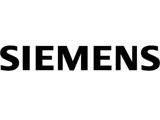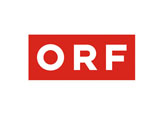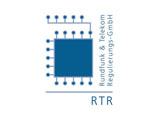The ITV production cycle
A synergetic framework of various
technologies and processes
The test project in Graz clearly demonstrated how one-sided the consumer‘s perspective is (and rightly so) when it comes to presenting the true background of television productions and especially interactive digital productions. Even before „television programming“ is produced, designed or filled with content – the reason people watch television in the first place – it is necessary to secure the technical means for transporting the television signal reliably. In the case of terrestrial transmission, none of this can happen without the installation and reliable operation of broadcasting facilities, radio lines, and all kinds of special networks. In the world of digital television, these systems – most of which already exist – have to be retrofitted to meet the requirements of this new transmission technology. As in the case of all new technologies, whether the systems will work as intended is still questionable. It is thus necessary to employ dedicated experts to set up these systems in such a way that the signals can be received by all viewers with the highest possible quality.
A synergetic framework of various
technologies and processes
The test project in Graz clearly demonstrated how one-sided the consumer‘s perspective is (and rightly so) when it comes to presenting the true background of television productions and especially interactive digital productions. Even before „television programming“ is produced, designed or filled with content – the reason people watch television in the first place – it is necessary to secure the technical means for transporting the television signal reliably. In the case of terrestrial transmission, none of this can happen without the installation and reliable operation of broadcasting facilities, radio lines, and all kinds of special networks. In the world of digital television, these systems – most of which already exist – have to be retrofitted to meet the requirements of this new transmission technology. As in the case of all new technologies, whether the systems will work as intended is still questionable. It is thus necessary to employ dedicated experts to set up these systems in such a way that the signals can be received by all viewers with the highest possible quality.
Inspiration, irritation, innovation
Offering not just digital television but also additional interactive multimedia television products complicates this process of fine-tuning even further. While television engineers worldwide have been familiar with the logistics of broadcasting classic television channels for decades (digital and analog technologies are not fundamentally different in this respect), they have to include completely new technical processes when dealing with ITV broadcasting. And there are no tried-and-true models for these activities. This means that practically everything has to be invented, implemented, tested and constantly improved – or even thrown out in some cases. MHP-based product development constitutes new territory for television providers throughout Europe and the rest of the world. In addition, individual MHP products – despite their standardized approach – can still be programmed on the basis of different IT architectures. Nobody knows how the new products will perform or how they will be (technically) received by viewers until they have been tested. Moreover, the question of terminal devices still remains. Currently none of these devices are completely similar to the others. When a new technology is developed, the various manufacturers usually follow different development paths. Therefore, the fact that all set-top boxes are MHP-compatible does not mean that all boxes will function in the same way (or even similarly) in individual applications. This first has to be noticed or proven using technical evidence, or – better yet – fast, cost-effective solutions to compatibility problems have to be suggested.



